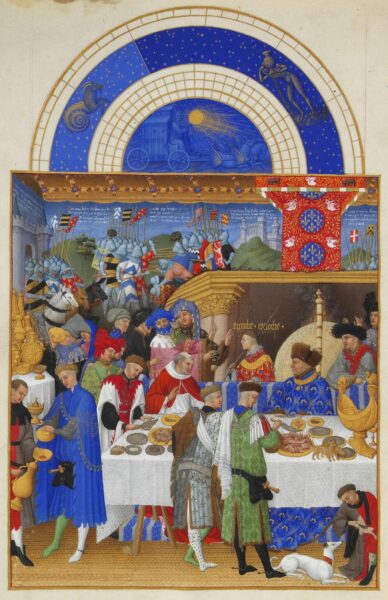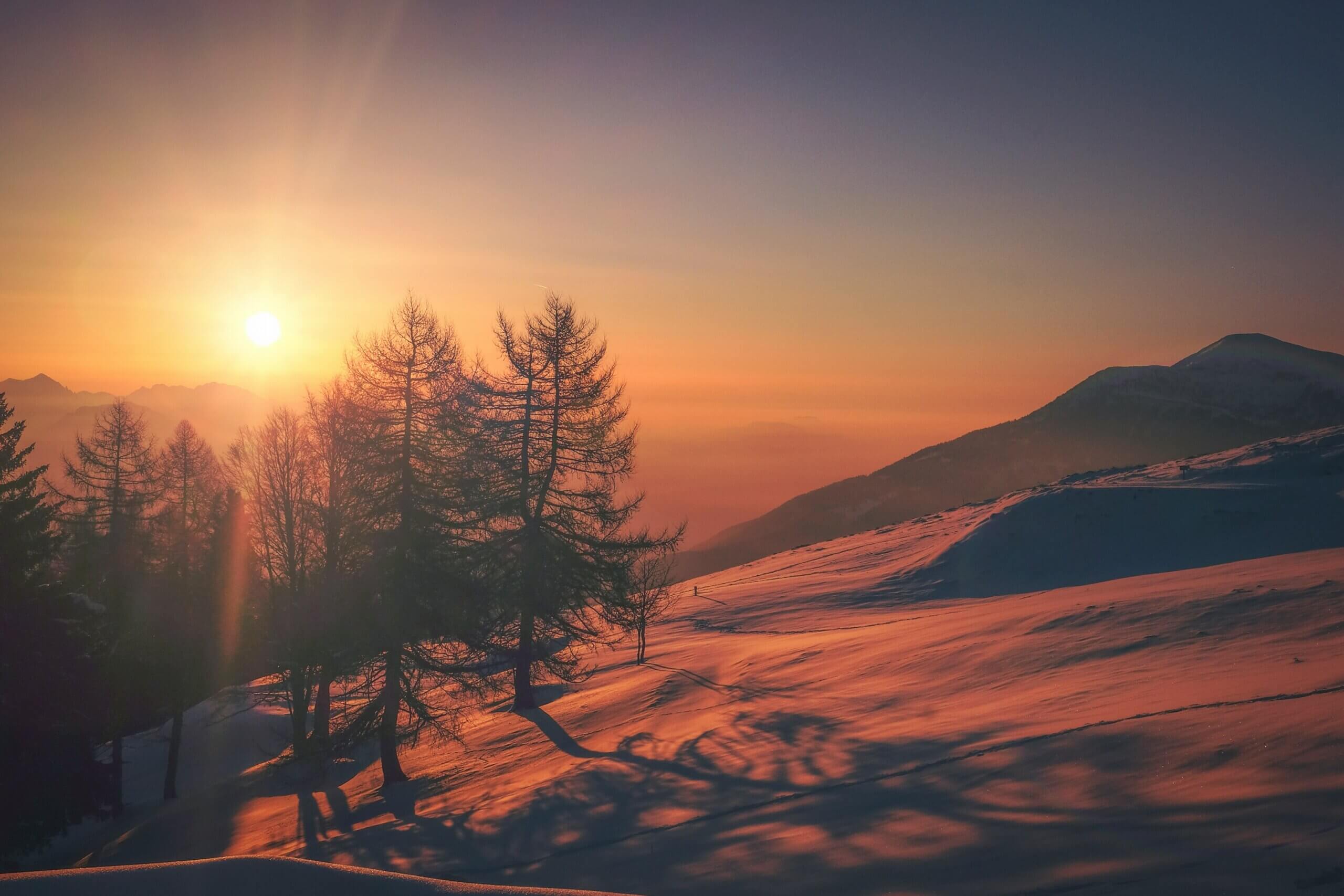Perhaps painting is more natural to man than writing; certainly the oldest cave paintings extant are tens of thousands of years older than the earliest examples of writing. Some of these ancient paintings are incredibly graceful; for example, the horses and bulls of the Lascaux caves in France, dating from perhaps 17,000 years ago, reveal delicate curves and use of perspective. Ancient Greek and Roman paintings reveal attention to detail and realism familiar to all of us.
But for me at least, tenderness in painting came into its own in a special way during the medieval period. Men and women so very much like ourselves in many ways have the technique and technology to create durable and highly detailed paintings which we can still examine today.
The sumptuous Hours of the Duc de Berry are a wonderful—if not exceptional—example. Perhaps the best preserved and most lavish manuscript in the late Gothic style, it was created between c. 1413 and 1489 in several phases by multiple artists and illuminators. A breviary, it contains various parts of the divine office including psalms, liturgical calendar, and scripture readings.
Our focus here is the calendar at the beginning of the office book: each month of the year receives a dedicated full-page image showcasing an event associated with the month, such as harvest or hunting. Full of everyday details of both court and peasant life, it represents one of the most iconic and idealized sources for our imagination surrounding the high medieval period. Entering the New Year, let us take a moment to examine the details of these months as preparations for appreciating what this year has in store for us.
January depicts the duke himself in a blue robe greeting guests at a gift giving party, with a prelate as a guest of honor. Behind, a tapestry depicts a battle, while in the foreground platters of small roasted birds, rabbits, and other dishes are visible on a heavily laden table.

From the colorful courtiers and warm palace, the February illustration takes us into a snowy landscape and a peasant’s house.

In the far left we see the interior of a house where a man and two women are warming themselves at a fire; the far couple have pulled their tunics up to warm their legs. Beyond, in the winter dusk, pigeons peck at seed in an enclosed yard near a sheep pen; beehives covered in snow, a shack, barrels, and faggots of wood, along with another peasant, inhabit the rest of the enclosure. In the background, a man in blue is chopping down a tree for firewood, while another leads a donkey along a path beaten in the snow towards a distant village where a church steeple is visible.
The months of March, June, July, and October are dedicated to various parts of the agricultural cycle. March depicts an oxen drawn plow guided by an older man in gray and blue; holes are visible in the knees of his leggings. At the crossing of the paths which intersect the fields is a little Gothic shrine. In June, reapers cut the hay which their women folk are taking into piles with wooden rakes.


July is a month for other harvests: a couple in the foreground shears sheep while a field of wheat is cut behind them. Cattails line an irrigation ditch, and various wildflowers are visibly interspersed with the wheat, reminding the viewer, perhaps, of the parable of the wheat and cockle.

In October we see peasants seeding a field. A man in the foreground scatters seed, his footprints marking the tilth behind him. A wooden plow of sorts–weighed down by a rock on top of it–is drawn by a horse behind him. In all of these, one of the Duke de Berry’s many chateaus or castles are depicted in the background.


The month of November depicts swineherds and their livestock foraging for acorns in a forest. Clad in a rosy tunic, a tough looking gentleman accompanied by a gray dog prepares to throw a stick into the oak trees in order to knock ripe acorns down for the pigs to consume. The hairy hogs are already feeding on downed acorns; in the background, two other swineherds and pigs recede forage beneath the trees, whose latticework of trunks reveal blue mountains and a river beyond. A type of pruning known as pollarding has made these oak trees straight and bare of lower branches. Pollarding allowed the lower branches to be harvested as firewood while still producing nuts; the lack of lower foliage also allowed for a denser spacing of trees.
Other months give nobility the centerstage; in August, a falconing party departs, while the wheat reaped in July is threshed in the background. Laborers or youths tired of the heat take a plunge in a river. In an ambitious attempt at realism, the illuminator has tried to capture the distortion and discoloration of the swimmers’ bodies in the grayish water.

In April, château Dourdan (or is it Pierrefonds?) stands in the background. A betrothal occurs in the foreground; a richly dressed pair of witnesses accompany an even more richly dressed pair exchanging rings. Elaborate head coverings and multi-layered brocade tunics and dresses adorn the protagonists. Many commentators suspect that this scene depicts the Duke himself, in a similar blue to that of his January garb, and his second wife, Jeanne de Boulogne, who was only twelve at the time of their marriage. Her face is more childing and figure is certainly less full than that of the woman standing by her, which would support this identification. A partially visible enclosed garden to the right provides a symbolic balance to the espousal taking place on the left.

On the other hand, the engagement scene could be just another example of the cycle of life and death which each calendar page embodies. Seed is sown (March, October), crops are harvested (June, July, August, September), pigs are fattened (November), boars and other animals hunted (August, December), nobles and peasants alike make feast and celebrate (January, May), warm themselves (February), and embark on marriage (April).
These paintings represent a new step in naturalism. In some ways they might be propaganda pieces for the duke, glorifying and idealizing the classes they depict. But they are also a glorification of the yearly cycle of life and death, and this might enable us to appreciate the cycle in which we live and die.
Taking a break from focusing on jeremiads, however justified, about the state of the Church and world, perhaps contemplating the details of these illuminations is more wholesome if less addicting than the news.
These tender medieval painters, attentive to the cycle of life, invite us to leisure and work, to celebration and love of our world as it is. Let us also attend to the New Year’s beautiful dance. Let us feast and hunt, walk among the trees, swim, and warm ourselves by the fire. Let us joy in the circle of the year, or as a trope as the first Sunday of Advent puts it, the anni curriculum.


